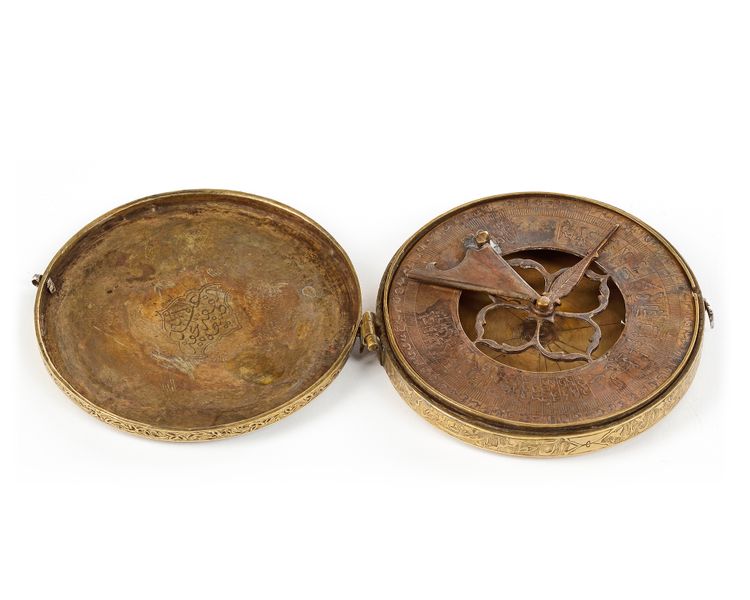AN UNUSUAL QIBLQA-INDICATOR BY THE MASTER CRAFTSMAN OF LATE 17TH CENTURY ISFAHAN, ABD AL-AIMMA
The top and base of the box heavily inscribed in minute naskh script, the signature at the centre of the top,
6.5 cm. diam.
‘Abd al-A’imma was one of the most prolific instrument-makers of late-17th-century Isfahan. [See Mayer, Islamic Astrolabists, pp. 23-26.] He is known by over thirty astrolabes and at least two other qibla-indicators, both of which are rectangular and incorporate sundials and information on the times of prayer. His work is characterized by its elegance and its technical accuracy. He used an elegant ornamental naskhî script for his principal engraving. Nothing of consequence is known of his life, save that he was a Shi‘ite, his name signifying “Slave of the (twelve Shi‘ite) Imâms”, in the same way that little is known about the milieu in which he worked.
CATALOGUE NOTE
This is a scientific instrument designed solely for the purpose of finding Mecca from anywhere within the Islamic world. Qibla simply means ‘the direction of Mecca’, so a qibla indicator indicates what that direction is. One of the five pillars of Islam directs Muslims to pray in the direction of Mecca five times a day, so it is essential they know which way to face, wherever they are.
Many devices exist to find the direction of Mecca, but once the compass found its way into the Islamic world - around the 13th-century AD - it became one of the most popular. Different types of compass can often be found incorporated into other instruments, such as astrolabes, or in qibla indicators like the one shown here.
there is a circular grid called a gazetteer, this lists all the places you might possibly want to find Mecca from. Another section gives an approximate direction (eg NE) for Mecca in relation to where you are, and another gives you a more accurate direction still. The bottom section contains a compass, which you line up with the direction quoted for your location, to find Mecca.
This device allowed anyone within the expanding Islamic world to find the direction of Mecca with a minimum of scientific knowledge. All a devout Muslim needed to know was the name of the town nearest to where he found himself. Independent travel, while keeping to the pillars of Islam, was now possible.






